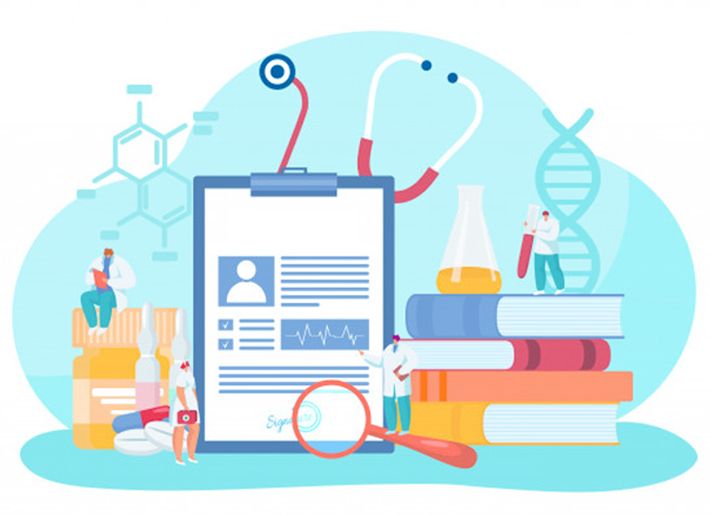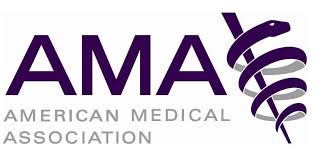Place of Service (POS) Codes in Medical Billing

In the growing medical billing industry in the U.S., Place of Service (POS) codes are often a blind spot for healthcare providers. While many are aware of the basic function of POS defining where a service was rendered, yet, few understand how crucial these codes are for long-term financial success of their practice. If you have been experiencing claim denials, payment delays, or are simply looking to optimize your billing process, it is time to dive deeper into POS codes and make them work harder for your practice.
BLOG OUTLINE
– Facility POS Codes
– Non-Facility POS Codes
– Telehealth POS Codes
What is a Place of Service (POS) Code? And Why Should You Care?
At its core, a POS code is a two-digit number that tells payers exactly where the medical service was delivered. Whether it is a private clinic, a multi-specialty hospital, patient’s home, or the medical services are rendered via telehealth, each location is assigned a specific POS code, which influences and decides the actual reimbursement for the specific medical service. But here is the kicker: POS codes affect much more than merely reimbursement. They are vital to compliance, audit prevention, and ensuring your practice is not leaving money on the table. If you are not using the correct POS codes or does not understand the nuances of how each POS code impacts your claims, you are risking financial inefficiency and operational slowdowns in your medical practice.
Related reading: POS codes specific to mental health billing.
When to Use Each POS Code: Key Considerations with Examples
| Category | POS Code | Description | When to Use |
|---|---|---|---|
| Facility | POS 21 | Inpatient Hospital | When services are provided to a patient admitted in a hospital for overnight stays or extended care. |
| Facility | POS 22 | On-Campus Outpatient Hospital | When services are provided in the outpatient department of a hospital on the main campus. |
| Facility | POS 23 | Emergency Room – Hospital | When a patient is treated in the emergency room of a hospital. |
| Facility | POS 24 | Ambulatory Surgical Center | When a patient receives surgery at an outpatient facility that provides surgical services. |
| Facility | POS 20 | Urgent Care Facility | For services in an urgent care center for non-life-threatening issues needing prompt attention. |
| Facility | POS 31 | Skilled Nursing Facility | When services are provided in a facility offering rehab or long-term care. |
| Non-Facility | POS 11 | Physician’s Office | When services are rendered in a private office by a physician or healthcare provider. |
| Non-Facility | POS 12 | Patient’s Home | For services provided to a patient at their residence. |
| Non-Facility | POS 03 | School | When services are provided in a school health clinic or similar setting. |
| Non-Facility | POS 49 | Independent Clinic | For services at a clinic not affiliated with a hospital or large system. |
| Telehealth | POS 02 | Telehealth | For real-time virtual services between patient and provider in different locations. |
| Telehealth | POS 18 | Store-and-Forward Telemedicine | For non-real-time services where patient data is sent for later review. |
For Insurance Credentialing, Medical Billing Services and other services
Facility POS Codes
POS 21 – Inpatient Hospital Example
A patient requires a bypass surgery and is admitted to the hospital overnight. Here, POS 21 is used because the patient stays in a hospital for treatment & observation.
Tip: Hospitals are often reimbursed at higher rates for inpatient stays, so make sure to always verify patient admission status.
POS 22 – On-Campus Outpatient Hospital Example
If a patient visits the outpatient clinic located on the hospital's main campus for a CT scan, POS 22 would be the appropriate code.
Why this matters: This is critical for Medicare billing, as reimbursement rates differ for services provided on-campus vs. off-campus facilities.
POS 23 – Emergency Room – Hospital Example
A patient comes to the emergency room with acute chest pain. After evaluation, the physician determines that was not a heart attack but still requires urgent care. POS 23 is used.
Tip: Emergency services often receive higher reimbursement rates, if billed with proper POS coding. Improper submissions leads to claim denial
POS 24 – Ambulatory Surgical Center Example
A patient undergoes laser eye surgery at an outpatient surgical center. POS 24 is used for outpatient surgical settings.
Why it matters: Correctly coding these helps maximize reimbursement for outpatient surgeries, which are often reimbursed differently than inpatient services.
POS 20 – Urgent Care Facility Example
A patient visits an urgent care clinic for a non-emergency health issue like a sprained ankle or a mild fever. POS 20 applies in such cases.
Pro Tip: Many urgent care centers are out-of-network, so correct POS coding helps avoid payment delays and claim rejections.
POS 31 – Skilled Nursing Facility Example
After discharging from the hospital, a patient receives physical therapy in a skilled nursing facility to regain strength after surgery. POS 31 is the correct code for such long term care plans.
Why this is important: Skilled nursing facilities provide long-term care, which often has unique reimbursement rules.
Non-Facility POS Codes
POS 12 – Patient's Home Example
A physician performs a home visit for a geriatric patient who is homebound. POS 12 is the correct code for services provided at the patient’s residence.
Pro Tip: Some insurers may have restrictions on home visits, so always double-check payer guidelines to ensure reimbursement.
POS 03 – School Example
A student receives a flu shot in the school clinic or a similar health facility. The provider uses POS 03 to code the service.
Why it matters: This code is used for school-based health services, and applying it correctly ensures compliance with Medicare and Medicaid guidelines.
Telehealth POS Codes
POS 02 – Telehealth Example
A patient has a follow-up appointment for chronic disease management with their doctor via video consultation. POS 02 is used to indicate telehealth services.
Why this is important: As telehealth grows in popularity, proper use of POS 02 helps ensure that services are reimbursed at appropriate rates and avoid audit risks.
POS 18 – Store-and-Forward Telemedicine Example
A dermatologist reviews a patient’s photo of a suspicious mole sent via secure messaging for an online diagnosis. POS 18 would be used for store-and-forward telemedicine services.
Pro Tip: POS 18 is great for asynchronous care and is becoming more common in specialties like dermatology
The Hidden Power of POS Codes : Beyond the Basics
Most guides on POS codes stop at explaining what they are. But let’s take it a step further and explore how to leverage POS codes to your advantage. The following strategies will help ensure you’re not just avoiding errors but actively using POS codes to optimize your billing process.
Utilizing POS Codes for Accurate Reimbursement Forecasting
Properly applied POS codes provide a clear picture of where your revenue is coming from—and, more importantly, how to predict future reimbursements.
Actionable Insight: By tracking which POS codes are most commonly used in your practice, you can determine which service locations are bringing in the most revenue. For example, if a significant portion of your claims come from telehealth (POS 02), this insight will help you plan your resources and staff accordingly.
How to Prevent Coding Errors that Could Cost You Thousands
There’s no room for guesswork when it comes to POS codes. Errors like assigning a home visit (POS 12) as an office visit (POS 11) could result in a significant loss of revenue.
Solution: Integrate a two-step verification system for POS codes. This can be automated via your practice management software, flagging any potential mismatches before they get submitted to payers.
New Trends: POS Codes and Telehealth in 2025
As telemedicine continues to grow, POS codes for telehealth are becoming more critical than ever. Understanding the correct use of codes like POS 02 (Telehealth) and POS 18 (Store-and-Forward Telemedicine) is key to staying ahead of the curve.
Forward-Thinking Strategy: With telehealth becoming an integral part of the healthcare system, it’s crucial to establish telemedicine-specific billing processes now, rather than scrambling when the demand spikes. POS codes like POS 02 can unlock higher reimbursement rates for telehealth services—if used correctly.
Supporting Evidence: Why POS Codes Matter
According to the Healthcare Financial Management Association (HFMA), incorrect POS coding is one of the leading causes of claims denials. In fact, nearly 20% of outpatient claims are denied due to incorrect POS code usage.
Moreover, the American Medical Association (AMA) highlights that coding errors, particularly with POS codes, cost healthcare providers millions of dollars each year in denied claims and revenue loss.
The Secret Behind the Most Common POS Coding Mistakes
It’s easy to overlook small details in coding. But those small oversights can compound over time, leading to denied claims, incorrect reimbursements, and an overall inefficient billing process. Let’s break down the top 5 POS coding errors most practices make—and how to avoid them.
Misidentifying the Service Location
It’s simple but impactful. Assigning a POS 11 code (office visit) for a service delivered via POS 20 (urgent care) will trigger errors that lead to underpayment or claim rejection.
How to fix: Use automated tools that help match the service location to the appropriate POS code before submitting the claim.
Incorrect Use of Telehealth Codes
With the rise of telemedicine, it’s easy to confuse POS 02 (Telehealth) with POS 12 (home visit). This mistake could lead to financial penalties or audit issues.
Solution: Train your billing team on the nuances of telehealth coding and establish clear guidelines for its usage.
Overlooking POS Code Updates
CMS frequently updates POS codes, especially as new healthcare trends emerge (think: telehealth, home care, or urgent care). Missing these updates can result in outdated or incorrect coding.
Solution: Keep up-to-date with CMS changes or partner with a billing service that continuously updates its coding database.
Failing to Account for Payer-Specific Rules
Different insurers may require specific POS codes. For instance, Medicare may use one code for inpatient services while private payers use another.
Solution: Cross-reference your POS codes with each payer’s specific guidelines to ensure compliance.
Inconsistent POS Code Usage Across Providers
A lack of uniformity in POS code application across your practice can lead to discrepancies in billing and reimbursement rates.
Solution: Set up practice-wide protocols for coding consistency. Use templates to guide your providers in selecting the correct POS code for each service.
Step-by-Step Guide: How to Use POS Codes in Medical Billing
Step 1: Understand What POS Codes Are
- Place of Service (POS) codes are two-digit codes used on healthcare claims to indicate the location where services were provided.
- Issued by CMS (Centers for Medicare & Medicaid Services), POS codes help payers determine reimbursement rates and applicable billing rules.
Step 2: Identify the Service Location
- Determine where the healthcare service took place, such as:
- A physician’s office
- Hospital inpatient or outpatient facility
- Patient’s home
- Ambulatory surgical center
- Telehealth setting
- Accurate identification is crucial, as different POS codes affect reimbursement.
Step 3: Select the Appropriate POS Code
- Choose the POS code that accurately matches the service location.
- Use CMS’s official list of POS codes as a reference. For example:
- POS 11 – Physician’s Office
- POS 21 – Inpatient Hospital
- POS 02 – Telehealth
Step 4: Use the POS Code on the CMS-1500 Claim Form
- Enter the POS code in Box 24B on the CMS-1500 claim form, used for professional claims.
- Each line of service should include the correct POS code.
Step 5: Ensure POS Matches CPT/HCPCS Codes
- Make sure the procedure codes (CPT/HCPCS) align with the POS. For example: A surgery CPT code with POS 11 may raise red flags unless it’s minor and permitted in an office setting.
- Mismatched codes can result in denials or underpayments.
Step 6: Verify Payer-Specific POS Rules
- Check payer guidelines, as some insurance carriers have specific POS coding requirements or restrictions.
- Example: Medicare reimburses telehealth services differently based on whether POS 02 or POS 10 is used.
Step 7: Submit Claims Electronically or on Paper
- After including the POS code on each line of the CMS-1500 form, submit the claim.
- Ensure all other fields are accurately filled to avoid claim rejections.
Step 8: Monitor Claim Status and Denials
- Track claims after submission.
- If denied, review the denial reason code to see if it’s related to an incorrect or inappropriate POS code.
- Correct and resubmit if needed.
Step 9: Keep Up with POS Code Updates
- CMS updates POS codes occasionally. Stay informed via:
- CMS.gov
- Medicare Learning Network (MLN)
- Billing software alerts
Step 10: Train Staff and Audit Regularly
- Educate billing and front-office staff on proper POS usage.
- Perform regular audits to:
- Catch POS-related errors
- Improve clean claim rate
- Maximize revenue
Best Practices for Using POS Codes Correctly
Ensure Accuracy at the Point of Service
Ensure your providers are familiar with the nuances of each POS code and its application.
Pro Tip: Use an automated billing system that flags potential errors in real time.
Stay Updated on CMS Changes
The Centers for Medicare & Medicaid Services (CMS) regularly updates POS code definitions and guidelines.
Example: CMS’s Telemedicine Update in 2020 expanded telehealth services, making POS 02 and POS 18 more widely applicable.
Audit Your Claims Regularly
Run regular audits on POS coding practices to ensure compliance and reduce errors.
Pro Tip: Implement AI-powered tools to scan claims for possible coding mistakes and enhance revenue cycle management.
Conclusion : Make POS Codes Work for You
POS codes may seem like small pieces of the billing puzzle, but when used correctly, they have a big impact on your practice’s financial health. By following best practices and applying advanced strategies, you can ensure your practice is not only compliant but also profitable. By understanding and correctly applying POS codes, healthcare providers not only enhance their claim acceptance rates, but they also ensure their practice’s revenue cycle runs smoothly. As coding and billing standards continue to evolve, staying informed and continuously educating your team on POS codes will give you a competitive edge in the ever-changing world of medical billing.
Remember: The small details matter. Mastering POS codes gives you a competitive edge, ensuring accurate reimbursement, faster claims processing, and ultimately, a healthier revenue cycle.
Ready to Transform Your Medical Billing?
Don’t leave money on the table with coding mistakes. Let our expert billing team guide you to faster reimbursementsand fewer claim denials. Contact us for a free consultation!



